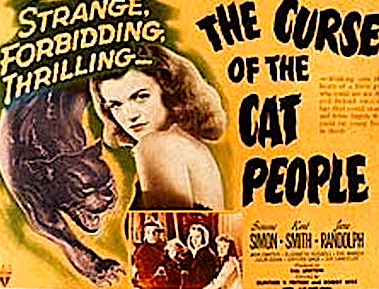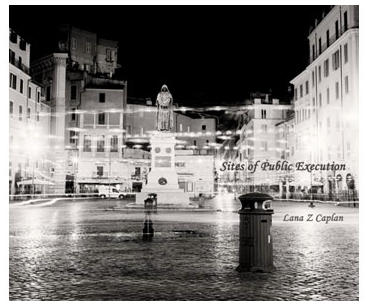





Can you believe it, campers? I took an entire weekend off. Well, not off, precisely — I edited copy for two wildly different websites, walked a new author through the mysteries of blogging, and threw a gala dinner party — but the point is, I didn’t blog. Not even a little.
Except for very late last night, when I discovered that an apparently well-disposed Russian blogger had tried to leave a comment here. To be specific, I discovered it in my about-to-be-deleted spam. (What, you thought I wouldn’t log on to see if my spam-blocking program hadn’t committed some unanticipated mayhem while I was looking the other way, just because I wasn’t posting? Even when I’m on vacation, I often check in to answer readers’ questions.) Unfortunately, I don’t read Russian, but a friend who does said that it was an interesting comment. Even more unfortunately, neither my blogging program nor I is in a position to provide translation services for the fine folks who read this blog in translation. Which means, I’m afraid, that I can only post comments in English, even on the rare occasion that my spam-screening program allows me to see those in foreign languages.
All of which I felt compelled to mention late last night. What I neglected to mention was (a) the fact that my blogging program requires me to approve every first-time commenter’s post (which is why, in case some of you first-timers had been wondering, your comments may not have appeared on the blog right away) and (b) the reason that this level of scrutiny is necessary. Spamming advertisers often try to post links to their products’ websites as comments on blogs; if I did not employ my dual-level screening system, you would constantly be regaled with 40 or 50 ads, many of which for products and services that do not bear mention on a family-friendly site. (Since it’s important to me that those of you reading on computers with parental controls and/or public computers and/or work computers have unfettered access to the Author! Author! community, I actually do check links.)
So in case I haven’t said it recently: please, keep the conversation G-rated, keep it in the language of the site, and I’ll make a sincere effort to keep my spam screener from eating your thoughts. And if you’re even considering posting a link in my comments, please review the rules for posting comments before tossing ‘em up there.
Thanks tons. Let’s get back to the matter at hand.
Last week, I gave you a heads-up about a bugbear that haunts many a novel and memoir submission, the passive protagonist problem. The dreaded PPP, for those of you who missed my last couple of posts, arises when the action of a book occurs around the main character, rather than her participating actively in it — or (dare I say it?) causing it.
As I intimated last time (and the week before, and a year ago, and…), passive protagonists tend to annoy professional readers. While naturally not every single agent, editor, contest judge, or screener in the biz will instantly stop reading the moment the leading character in a novel stops to contemplate the world around him, at any given moment, thousands and thousands of submissions sitting on professional readers’ desks feature protagonists who do precisely that.
Often for pages and chapters at a time. It’s not necessarily that there’s no action occurring on the page; the protagonist merely seems to be an observer. Unlike the assumed other observer of the plot — the reader — the protagonist is a spectator enjoying the considerable twin advantages of being personally involved in the outcome of the struggle-in-progress and having the capacity to comment upon goings-on for the reader’s benefit. (In the language of the prevailing narrative, presumably.)
Yes, yes, I know: the latter practice is a necessity in a first-person narrative. The nature of the beast, really — when the narrator and the protagonist are one and the same, it’s pretty hard to keep the protagonist’s thoughts and feelings out of the narrative. (Although you’d be surprised at how many memoir submissions seem devoted to the losing battle of trying to keep the narrative impersonal. Just the facts, ma’am.) And in a close third-person narrative, the reader if often treated to glimpses of the protagonist’s internal mutterings.
All of that’s perfectly appropriate, of course — although as Millicent the agency screener would be only too happy to tell you, the proper proportion of internal monologue to external activity varies wildly by genre. An unusually chatty protagonist of a Western would be practically silent by the standards of most science fiction subcategories, for instance, and even a relatively reticent memoir narrator would strike the average thriller’s protagonist as living almost entirely inside his own head.
I’ve said it before, and I shall no doubt say it again: there’s just no substitute for being conversant with the norms of your chosen book category. And there’s just no other way of becoming conversant with the current market than sitting down and reading books like yours that have been released within the past few years.
Category-appropriate levels of internal monologue is not what I mean by a passive protagonist problem, though. I’m talking about the kind of protagonist who watches intently what is going on around him — sometimes letting the reader in on his thoughts on the subject, sometimes not — but does not speak or act in a way that is in any way likely to change what’s going on.
The plot just carries him along, a leaf tossed into a river.
Nothing against a little quiet contemplation, but if you were screening 50 manuscripts a day, and 30 of them featured passive protagonists, it would start to annoy you eventually, too. (And in response to what half of you just thought: no, that’s not an exaggeration; if anything, the 30 out of 50 estimate is on the low side. Just ask any experienced contest judge.)
Given the extreme popularity of the passive protagonist, perhaps it’s understandable that the average Millicent’s reaction to encountering inert characters tends to be a trifle, well, negative, almost to the point of being reflexive. One doesn’t need to pull all that many pans out of hot ovens without using mitts to start snatching one’s hands away from blister-inducing surfaces, after all.
Already, I see a forest of raised hands. “But if the pros dislike character passivity so much,” some of you call out, and with excellent reason, “why don’t they just tell writers so? How hard would it be to post on their websites or include in their agency guide listings, ‘No passive protagonists, please?'”
Excellent point, thought-huggers: that would indeed be a spectacularly good plan. However, as is the case with so many basic facts of publishing, many agents and editors are under the impression that they do tell aspiring writers about it — in fact, even form-letter rejections tend to contain some reference to the phenomenon, but not in so many words. Usually, it’s cast in terms that you’d have to read many manuscripts a week to translate accurately.
I couldn’t identify with the main character, for instance, is a fairly common euphemism for Passive Protagonist Syndrome.
Was that giant thump I just heard a thousand jaws hitting the floor? Let me guess: you thought you were the only submitter who had ever heard gotten this response, right?
Would you be surprised to learn that variations on this sentiment are the most common pieces of rejection feedback writers receive? So I would imagine that quite a few of you — at least, the ones who have been querying and submitting diligently, bless your intrepid hears — have seen at least one iteration of this little number in at least one rejection letter.
Let’s take a little informal poll to see how effective this common form-rejection phraseology has been at making its point. Hands up, anyone who received such a response and instantly thought, “Oh, I’d better make my protagonist more active, by gum.”
Anyone? Anyone?
To be fair, there are other a million reasons a screener (who is usually the one weeding out submissions at a big agency, by the way, rather than the agent) might not have identified with a protagonist other than passivity. But it is one of the more common. Other rejection-speak that might translate as an appeal for more activity: I didn’t like the main character enough to follow him through an entire book, There isn’t enough conflict here, and the ever-popular I just didn’t fall in love with the protagonist enough to pick up the book.
Since this last euphemism has about as many meanings as aloha, however, it’s often difficult to translate exactly. I have seen it mean everything from, The first paragraph bored me to I hate books about brunettes. You’d be amazed what a broad range of issues folks on the business side of the biz will lump under the general rubric of writing problem.
“But Anne,” I hear some of you slice-of-lifers fume, “this is grossly unfair! Surely, this is not a reaction that every reader would have to a slightly lackadaisical character — and in case you haven’t noticed, the world is stuffed to the gills with people who do not rush headlong into conflict at the slightest provocation. Haven’t any of you professional readers ever heard of REALISM?”
Oh, I think that this problem is all about realism — I suspect that writers tend to identify with passive protagonists far, far more than other readers do. (And just to give you a heads-up, imaginary protestors: professional readers generally HATE it when aspiring writers accuse them of having invented the marketing reality that certain books are harder to sell than others. Really.)
There’s good reason that writers tend to root for the quiet types, of course: we writers spend a lot of time and energy watching the world around us, capturing trenchant observations and seeing relationships in ways nobody ever has before. Small wonder, then, that writers often think of people who do this as likeable, charming, interesting people, well worth knowing — and certainly lovable enough to warrant following all the way to the end of a book, thank you very much, Millicent..
So it often comes as a great shock to these writers that the average fiction or memoir agent, to put it mildly, does not share this opinion. Nor does the average editor of same; even those who publish books by journalists — who are, after all, trained to be primarily observers — want the subjects of those stories to be active.
For one simple reason: because such stories are, by and large, infinitely easier to sell to readers.
Yes, really — remember, we writers are far from normal readers. We buy a disproportionate share of any year’s crop of literary fiction, for instance, as well as much of the short story collections and masses of poetry. We pore over books in our chosen book category — at least I hope you do; I certainly recommend it often enough — following our favorite authors’ careers with a loyalty and intensity that others reserve for sports stars.
We are, in fact, an extremely specific niche market of book purchasers. It would be interesting to try to make the case that a particular piece of literary fiction could be marketed successfully to writers-who-read, specifically on the grounds that its protagonist does think like a writer: observing, observing, observing.
However, if you are writing in most of the established book categories, I can virtually guarantee that writers will not be your primary target audience.
And that’s something of a pity, because from a writer’s point of view, one of the great fringe benefits of the craft is the delightful ability to make one’s after-the-fact observations on a situation appear to be the protagonist’s first reactions — and one of the simplest ways to incorporate our shrewd observations on the human condition seamlessly into a text is to attribute them to a character.
Writers who read LOVE that.
Which is fine, until the protagonist becomes so busy observing — or feeling, or thinking — that it essentially becomes his full-time job in the book. Since in the two of the three most common fictional voices — omniscient narrator, first person, and tight third person, where the reader hears the thoughts of the protagonist — the observing character is generally the protagonist, this propensity sometimes results in a book centered on someone who is too busy observing others to have a life of his or her own.
Yes, you did just draw the correct conclusion there: on the page, being purely reactive seldom comes across as all that fascinating a life.
That sentiment just stirred up some pretty intense reactions out there, didn’t it? “But Anne,” I hear some reactivity-lovers cry, “my protagonist enjoys a rich and full emotional life by responding to stimuli around him. His mental activity is prodigious. If that was good enough for Mr. Henry James, why shouldn’t it be good enough for me?”
Well, for starters, have you taken a gander at some of Mr. Henry James’ sentences lately? Some of them are two pages long, for heaven’s sake; even Dickens would have blushed at that.
More to the point, from a regular reader’s point of view, a protagonist’s being upset, resentful, or even wrestling within himself trying to figure out the best course of action is not automatically dramatic. To compound that blasphemy, allow me to add: thought about interesting matters does not necessarily make interesting reading.
In the throes of eliciting solid human emotion or trenchant insight, writers can often lose sight of these salient facts.
Why aren’t internal dynamics inherently dramatic, you ask? Because whilst the mind is churning, the entirety of protagonist’s glorious energy expenditure typically is not changing the world around her one iota. At the risk of sounding like a constructor of form-letter rejections, it’s substantially more difficult to identify with a protagonist who diagnoses the problems around her with pinpoint accuracy, yet does not act upon these insights in order to rectify the situation, than one who jumps into the conversation or does something to disturb the status quo.
I’ll go even farther than that: the character who speaks up in the face of what she perceives to be injustice, even if it’s very quietly, or who takes a concrete step to gain what she wants, even if it’s a very tiny or largely symbolic one, is usually more likable than one who remains inert and resents. And before any of you creators of anti-heroes scoff at the very concept of protagonist likability, let me whip out yet another of the great form-letter euphemisms: I didn’t care enough about the character to keep turning the pages.
Harsh? You bet, but not entirely unjustified, from Millicent’s point of view. Here’s how the passive protagonist phenomenon generally plays out in otherwise solid, well-written manuscripts:
(1) The protagonist is confronted with a dilemma, so she worries about for pages at a time before doing anything about it (If, indeed, she elects to do anything about it at all.)
(2) If it’s a serious problem, she may mull it over for entire chapters. (Or entire volumes of a trilogy, in an 18th-century novel.)
(3) When the villain is mean to her, instead of speaking up, she will think appropriate responses. Should the mean person be her love interest, she must never, ever ask him to explain himself; much better to mull his possible motivations mentally, and proceed upon those assumptions.
(4) At some point, she will probably talk it all over with her best friend(s)/lover(s)/people who can give her information about the situation before selecting a course of action. (See parenthetical disclaimer in #1.)
(5) If she is confronted with a mystery, she will methodically collect every piece of evidence before drawing any conclusions that might require action. Frequently, this requires tracking down interested parties, asking a single question, and listening passively while those parties provide her with the necessary clues.
(6) However, if the problem to be confronted is relationship-based, she must on no account simply ask any of the parties involved how they view the situation, or reveal her own feelings on the subject to them. Avoidable guesswork may in this manner frequently supply suspense.
(7) Even in the wake of discovering ostensibly life-changing (or -threatening) revelations, she takes the time to pay attention to the niceties of life; she is not the type to leave her date in the lurch just because she’s doomed to die in 24 hours.
(8) When she has assembled all the facts and/or figured out what she should do (often prompted by an outside event that makes her THINK), she takes swift action, and the conflict is resolved.
Is it me, or is this progression of events just a tad passive-aggressive? Especially in plotlines that turn on misunderstandings, wouldn’t it make more sense if the protagonist spoke directly to the person with whom she’s in conflict at some point?
Gee, one might almost be tempted to conclude that writers as a group are confrontation-avoiders. Maybe we should all retreat into our individual corners and mull that one over.
Up those hands go again. “But Anne, I’m worried about the opposite problem: if I send my protagonist barreling into every available conflict, won’t that make readers dislike her, too? Not to mention getting her into all kinds of trouble — if she said out loud precisely what she thought of the people around her, they’d bludgeon her to a pulp within fifteen minutes.”
I’m glad you brought this up, hand-raisers: often, writers will have their protagonists keep their more trenchant barbs to themselves in order to make them more likable, especially if the protagonist happens to be female. The logic behind this choice at first glance seems solid: in real life, very aggressive people don’t tend to work and play as well with others as gentle, tolerant, accommodating sorts.
But as we’ve discussed before, what’s true in real life isn’t necessarily true on the page. An inert character who is nice to all and sundry is generally less likable from the reader’s point of view than the occasionally viper-tongued character who pushes situations out of the realm of the ordinary and into the conflictual.
Because, as I MAY have mentioned before, conflict is entertaining. On the page, if not in real life.
More to the point, lack of conflict can slow a narrative practically to a standstill. So can conflict in which the character the reader is supposed to care most about is not integrally involved, or conflict where the outcome doesn’t matter much to the protagonist — because if the protagonist doesn’t care enough to get involved, why should the reader?
“But Anne,” the hand-raisers protest, “my protagonist cares deeply about what’s going on; that’s why she thinks about it all so much, Besides, my villains are based upon people who are just awful in real life, so it’s impossible that the reader won’t automatically root against them, no matter whether my protagonist leaps into the fray or not. So what’s wrong with letting her sit back while the bad guys expose their true colors?”
Ooh, that’s a tough one. Not the question, necessarily, but pulling off plopping characters ripped from real life into a narrative where a comparatively virtuous protagonist stands back and observes their bad behavior. While pitting kindly and forbearing protagonists against aggressive bad folks (who often bear suspicious resemblances to the writer’s “ex-friends, ex-lovers, and enemies,” as the bard Joe Jackson likes to call them) is probably a pretty healthy real-world response, emotionally speaking, it can be deadly on a page.
Why? Well, the reader’s sense of dramatic fitness, for one thing: while it may be realistic to show a character confronting the same intractable problem or awful co-worker day after day, the mere fact of bringing the problem up generates an expectation that something will happen to change that status quo, doesn’t it? If the narrative violates that expectation, not only is the reader likely to become impatient — he’s likely to get bored.
It’s difficult to keep a reader interested indefinitely in a repeating pattern of events, no matter how beautifully they may be described. Then, too, sitting around and resenting, no matter how well-justified that resentment may be, is awfully darned hard to convey well in print.
But that doesn’t stop most of us from trying from time to time, does it?
Come on — ‘fess up; we all do it. We writers are notorious for taking revenge on the page, Rare is the creative writer who does not blow off the occasional real-world resentment, angst, or just plain annoyed helplessness by having his protagonist think pithy comebacks, uncomfortable reactions, pointed rhetorical questions, and/or outraged cris de coeur against intractable forces. Instead of, say, uttering these sentiments out loud, which might conceivably provoke a confrontation (and thus the conflict so dear to Millicent’s heart), or doing something small and indirect to undermine the larger conditions the protagonist is unable to alter.
Yes, people mutter to themselves constantly in real life; few of us actually tell of the boss in the way s/he deserves. However, at the risk of sounding like the proverbial broken record, just because something actually occurs does not necessarily mean that it will make good fiction.
What does make good fiction is conflict. Lots of it. On every page, if possible.
This is not to say, of course, that every protagonist should be a sword-wielding hero, smiting his enemies right and left — far from it. But even the mousiest character is capable of acting out from time to time.
And yes, I am about to give you another homework assignment. How clever of you to see it coming.
Whip out those Post-It notes and highlighting pens and start running through your manuscript, seeking out silent blowings-off of emotional steam. Whenever you find them, check to see if there is conflict on the rest of the page — and if your protagonist is taking part in it actively, only in thought, or simply as an observer.
Depending upon what you find in each instance, here are some possible next steps. (Fair warning: some of these are going to sound a wee bit familiar from last week’s assignment, as we’re talking about fixing the same phenomenon.)
(1) If there’s not conflict on the page in front of you, ask yourself: how could I add some? Or, if you’re trying to avoid adding length to the manuscript, are there elements slowing down the scene that you could cut? Does this interaction add enough to the plot or character development that it actually needs to be there?
(2) If your protagonist is active, pat yourself on the back. Then ask yourself anyway: is there something even more interesting s/he could do here? Something less predictable? A way that her reaction could surprise the reader a little more, perhaps? Small twists go a long way toward keeping a reader involved.
(3) If your protagonist is merely thinking her response, go over the moments when she is silently emoting. Is there some small tweak you could give to her response that would make it change the situation at hand? Or — and it’s astonishing how infrequently this solution seems to occur to most aspiring writers — could she say some of the things she’s thinking OUT LOUD?
(4) If your protagonist is a pure observer in the scene, sit down and figure out what precisely the observed interaction adds to the book. Are there ways that you could achieve the same goals in scenes where your protagonist is a stronger player? If not, could there be more than one conflict in the scene, so your protagonist could be involved in the lesser one?
If you find yourself worrying that these textual tweaks may cumulatively transform your protagonist a charming, well-rounded lump of inactivity into a seething mass of interpersonal problem generation, consider this: many agents and editors like to see themselves as people of action, dashing swashbucklers who wade through oceans of the ordinary to snatch up the golden treasure of the next bestseller, preferably mere seconds before the other pirates spot it. Protagonists who go for what they want tend to appeal to them.
More, at any rate, then they seem to appeal to most writers. In fact, this whole argument may well seem glib and market-minded to some of you, and frankly, from an artistic perspective, that’s completely understandable.
That’s not the only perspective that’s relevant here, though, even for the artist. Remember, a submitted manuscript does not need to speak only to its author, or even to other writers: its appeal needs to translate into other mindsets. It’s the writer’s job to make sure that the manuscript can speak to both the business side of the publishing world and the artistic side.
Before your work can speak to your target market of readers, it has to please another target market: agents and editors. Even if you have good reason to keep your protagonist from confronting his challenges directly — and you may well have dandy ones built into your plot; look at Hamlet — he will still have to keep in motion enough to please this necessary first audience.
So while you’re revising, ask yourself: how can I coax my protagonist out of his head, and into his story? How can his actions or words alter this particular moment in the plotline, if only a little?
As individuals, we can’t always more mountains, my friends; we can, however, usually kick around a few pebbles. Give it some thought under those swaying palms, people — but not too much. Keep up the good work!








